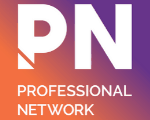Have a “Call to Action” in Your Speech
What is a “Call to Action”?
What is a call to action? A “Call to Action” is a point in your speech that persuades your audience to take a specific action. Usually, it is placed just before the end of the speech. This helps your audience to remember your key message and what to do next! A good “Call to Action” serves to attract and invite your audience to put your speech idea into practice and ignites your listeners to go and do something based on your speech.
Why have a “Call to Action” in your speech?
If you have a speech to make, you want your audience to have “a take home message” and you want them to have a “take home action”. A presentation is supposed to be to persuade them to take an action, to take the next step towards some desired goal. By having a having a good “Call to Action” in your speech, it makes it very clear what is the next step for your audience to take.
How to add a “Call to Action” in your speech
In order to have an effective “Call to Action” you should understand your audience. To tailor an excellent call to action, you will need some of the following information:
- Type of Audience
It is important to find out how familiar is your audience with your speech topic and how positive or negative they might be to what you are proposing.
- What’s in it for the Audience
Most people lead busy lives and already have too much to do. If you want them to do something new, you must convince them that your ideas will help them achieve their personal or organizational goals.
- Audience Resources
It is essential to create a “Call to Action” that coincides with the audience’s resources, whether that be time, money, knowledge or skill in a certain area. If you ask them to do something that is out of reach for them, it is less like that they will take the proposed action.
This is how to add a call to action during the actual speech:
- Demonstrate why your ideas are useful. Give your audience a reason to try out your ideas. Clearly, show the value of your presentation. This will encourage your audience to achieve the set goals.
- Be creative enough to give relevant actions. Ensure that these are clear, realistic and easy to implement. If you ask them to do too much, they will probably ignore your request.
- Use examples and illustrations. Again, ensure you are next steps are concrete and practical
- Take advantage of emotions! Use words that provoke emotions and enthusiasm to encourage the listeners to try out your points. Logic is powerful, but emotions are golden when it comes to persuading your audience to take an action.
- You could also use the emotion of fear. Motivate based on the fear of missing out (FOMO) in case they do not put your ideas into action.
- Explain the pros and cons of your ideas for them, and deal with the objections they might have to doing your recommended action.
Summary
In any speech where you want people to change their actions, you will need to have a “Call to Action”.
A “Call to Action” must be clear, realistic and easy to implement. This will require the speaker to put in some thought, planning and creativity to come up with a suitable “Call to Action”
A perfect “Call to Action” should motivate and inspire the listeners to go ahead and so something soon as they leave the talk. Sometimes it can even be possible to give your audience an action to do even before the speech ends.




